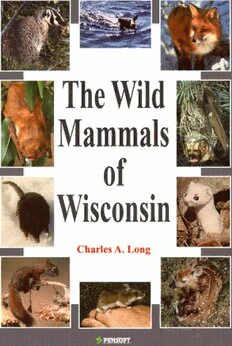
Wild Mammals of Wisconsin (Faunistica) PDF
552 Pages·2008·16.686 MB·English
Most books are stored in the elastic cloud where traffic is expensive. For this reason, we have a limit on daily download.
Preview Wild Mammals of Wisconsin (Faunistica)
Description:
The last book by Professor Charles A. Long The Wild Mammals of WisconsinA" is a comprehensive treatise on mammals found in Wisconsin, updating information on classification, identification, geography and other concepts of their biology. These include ecology (and status), habitats (including dens and nests), reproduction (both development and aging), and estimates of home range, movements, and density (with seasonality whenever possible). Geographic and micro-geographic variation of races and species are described, based on thousands of preserved specimens, many listed as essential specimens examined. The analysis also includes Upper Michigan, northern Illinois, and occasionally even eastern Minnesota. The problem of appropriate names is discussed, with fair attention to diverse opinions. Taxonomic synonymies include original names, invalid homonyms and synonyms that have been used, and the names deemed acceptable. The phylogeny of higher taxonomic groups, such as families and orders, provide curious histories and adaptations. Pre-historic and exterminated mammals are described, including the discovery of an elk-moose. Modern concepts, such as evolution and speciation and the biome concept are introduced. Genetics, physiology, animal diseases, relation of hosts to humanity, ecological succession, and zoogeography are discussed. An especially appealing section on former naturalists who studied Wisconsin mammals includes some surprises: John Muir, Henry David Thoreau, Aldo Leopold, Hartley H. T. Jackson, and the first woman mammalogist - Martha Maxwell of Portage. Detailed accounts are given for 69 species (not counting the few now exterminated), in 17 families and seven orders. A glossary, four appendices, and a magnificent bibliography are at the end. Countless illustrations include grand wildlife artists of past and present. To quote Long: All together we hope to express tribute to nature, and wildlife poetry and art.A"
See more
The list of books you might like
Most books are stored in the elastic cloud where traffic is expensive. For this reason, we have a limit on daily download.
